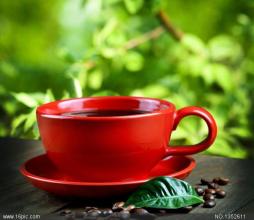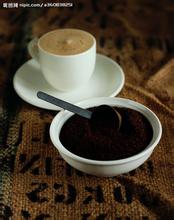Coffee flavor and taste characteristics of Santa Cruz Manor in Ecuador
Central mountains: Andes from Colombia into Ecuador after the border, divided into east and west Cordillera mountains, between the two mountains for the north high south low plateau, an average altitude of 2500 meters to 3000 meters between. The Andes run through the middle of the border. Ridges criss-cross, dividing the plateau into more than a dozen intermountain basins. The most important are the Quito basin and the Cuenca basin in the south. There are many volcanoes and frequent earthquakes in the territory. The famous Cotopaxi volcano, 5897 meters above sea level, is one of the highest active volcanoes in the world. Located in central Ecuador, Chimborazo Mountain, 6262 meters above sea level, is the highest peak in Ecuador, Ecuador's Chimborazo Mountain. From the center of the earth to the summit of the mountain is 6384.1 kilometers. Chimborazo is located in the western Cordillera of the Andes and has long been mistaken for the highest peak of the Andes. It is a dormant volcano with many craters, glaciers on the top, about 4694 meters above, and snow all year round.
Eastern Region: Part of the Amazon River Basin. The river is turbulent in the foothills of 1200~250 meters above sea level, and alluvial plain below 250 meters. The river is open, the water flow is gentle and there are many meandering rivers.
The Galapagos Archipelago is located in the middle of the Pacific Ocean, about 900 kilometers east of the mainland coast, covering an area of 7800 square kilometers, including 7 large islands and about 70 small islands, all composed of volcanic cones and lava. [3]
resources
Minerals are dominated by oil, mainly distributed in the Gulf of Guayaquil, and oil fields have also been found in the Amazon Plain. Gold and silver are distributed in Machachi and Saruma. Copper comes from Machachi. There are sulfur mines on the cologne islands. In addition, there are iron, lead and so on. Forest covers about 68% of the country's area, mostly in the eastern region, rich in valuable wood, such as redwood and balsa wood (or balsa wood). The coast teems with tuna and shrimp. Colon is home to giant turtles and lizards.
In the mid-15th century, among fishermen fishing in the Pacific Ocean off western South America, there were legends of magical islands. It is said that the islands can sometimes be clearly seen from a distance, but disappear as the ship approaches; sometimes they look like a galleon, sometimes they take on the shape of a witch. Fishermen called the islands "the enchanted islands," thinking they might be ruled by demons like the banshees of the sea in the Odyssey. This island, known to fishermen as the "magic island," is today the Galapagos Islands.
In 1535, the Galapagos Islands were discovered by chance by Frei Thomas de Berlanga of Spain and others. Thomas was born in 1487 on the banks of the Duro River in the Spanish province of Soria. He was the fourth bishop of Panama at that time. He was ordered to Peru. When his ship set out from Panama on February 23, under the impact of a strong current, they were carried to an unknown sea in the outer ocean. On March 10, an island in the Galapagos Islands was discovered. With only two days of fresh water left on board, the sailors landed in lifeboats and found plenty of seals, turtles, giant tortoises that could carry people and viper-like iguanas on the island, but they could not find fresh water, so they headed for another larger island more than 20 kilometers away. As the wind was still not blowing, it took them several days to get there, the water ran out quickly, and they had to starve, including the horses on board. 340 years after Frey Thomas de Berlanga discovered the island, in 1875, an indigenous man named Cobos arrived on San Cristobal Island, where he established the Hasenda Coffee Garden and planted about 100 hectares of Arabic bourbon coffee trees. Because the plantation is located between 140 meters and 275 meters above sea level, the climate is equivalent to the inland climate between 915 meters and 1830 meters, and the unique geographical conditions are suitable for the growth of super hard coffee beans (SHB) with high acidity, so this high quality coffee is settled here.
As coffee is consumed around the world and the world coffee industry moves toward mass production, San Cristobal's smaller and less reliable coffee industry is in trouble and may eventually be forced to abandon it for no profit. It wasn't until the early 1990s that the Gonzalez family bought Hassenda Coffee Plantation. The local microclimate created by the Humboldt Current, intense equatorial sunlight, and rapid temperature changes (43 ° C at sea level and 10 ° C to 16 ° C at 275 meters above sea level) provided unique favorable conditions for the Gonzalez family to expand coffee plantations. The Gonzalez family doubled the size of the coffee plantation by clearing the early land

Important Notice :
前街咖啡 FrontStreet Coffee has moved to new addredd:
FrontStreet Coffee Address: 315,Donghua East Road,GuangZhou
Tel:020 38364473
- Prev

Bright taste of Panamanian jadeite manor coffee flavor and taste characteristics of boutique coffee
The national emblem of Panama was launched in 1904. The national emblem of Panama is a brown eagle with its head held high and its wings. The national emblem of Panama stands on top of the national emblem with a white ribbon with a Panamanian motto for the benefit of the world. In the middle of the national emblem is the brown isthmus of Panama, the blue Pacific and Caribbean seas and the Panama Canal that connects them; under the blue sky, a bright round
- Next

Acid taste of San Pedro Manor Coffee in Puerto Rico characteristics of boutique coffee production area
Puerto Ricans are the general name of the residents of United States Puerto Rico in Central America and the Caribbean. There are about 3.4 million people (1979). Spanish and English are widely used. More Catholic. The earliest inhabitants of Puerto Rico were Arawak and Caribbean Indians. In 2012, whites of European origin accounted for about 73% of the population, mixed-race people accounted for 23%, and blacks accounted for 4%. There are more than 20,000 Americans and others.
Related
- Does Rose Summer choose Blue, Green or Red? Detailed explanation of Rose Summer Coffee plots and Classification in Panamanian Jade Manor
- What is the difference between the origin, producing area, processing plant, cooperative and manor of coffee beans?
- How fine does the espresso powder fit? how to grind the espresso?
- Sca coffee roasting degree color card coffee roasting degree 8 roasting color values what do you mean?
- The practice of lattes: how to make lattes at home
- Introduction to Indonesian Fine Coffee beans-- Java Coffee producing area of Indonesian Arabica Coffee
- How much will the flavor of light and medium roasted rose summer be expressed? What baking level is rose summer suitable for?
- Introduction to the characteristics of washing, sun-drying or wet-planing coffee commonly used in Mantenin, Indonesia
- Price characteristics of Arabica Coffee Bean Starbucks introduction to Manning Coffee Bean Taste producing area Variety Manor
- What is the authentic Yega flavor? What are the flavor characteristics of the really excellent Yejasuffi coffee beans?

